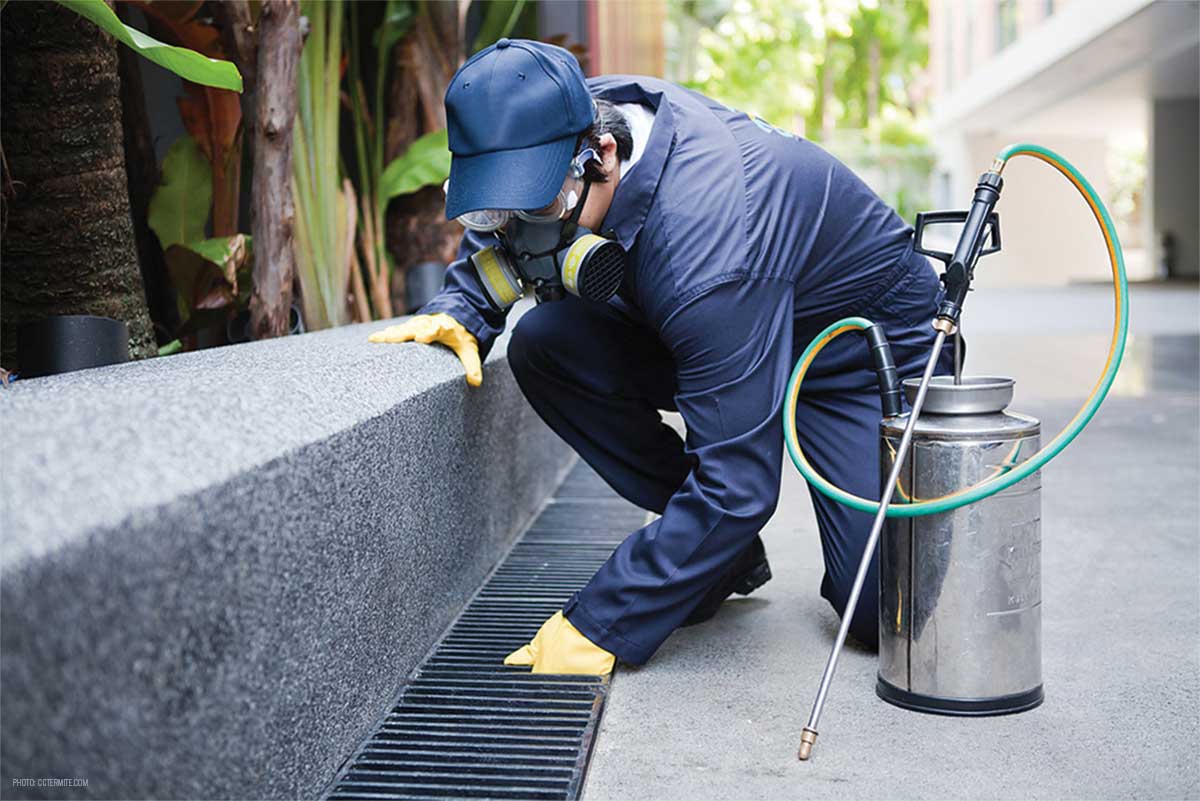Professional Exterminator Services: Say Goodbye to Pests completely!
Professional Exterminator Services: Say Goodbye to Pests completely!
Blog Article
Specialist Bug Control Techniques for Long-Term Outcomes
Expert insect control methods envelop a thorough strategy that begins with a complete evaluation and evaluation, followed by precise bug recognition to comprehend their habits patterns. The application of Integrated Bug Management (IPM) concepts, paired with eco-conscious therapies, creates the foundation of sustainable bug obliteration.
Examination and Evaluation
Upon going into a home for pest control services, the initial step is a detailed examination and evaluation to recognize the extent of the problem and figure out the most reliable treatment plan. Specialist insect control specialists are trained to thoroughly analyze the premises, trying to find signs of bug task such as droppings, chomp marks, nests, or any type of architectural damage. They will additionally evaluate the problems that may be bring in bugs, such as food resources, water leaks, or access points.

Pest Recognition and Habits

Additionally, recognizing the habits of the identified pest is crucial to applying effective control actions. For example, knowing where bugs nest, what they feed on, and their task patterns can aid pest control specialists devise methods to remove them successfully. Some insects might be nighttime, while others are extra active during the day. This expertise permits the application of therapies at ideal times for maximum effectiveness.
Integrated Insect Management (IPM)
Integrated Bug Management (IPM) methods incorporate several methods to control and avoid bug problems in a lasting and environmentally friendly fashion. exterminator near me. By incorporating techniques such as organic control, habitat control, adjustment of social practices, and making use of resistant selections, IPM aims to reduce making use of chemical pesticides
Among the key principles of IPM is the emphasis on prevention. This positive method involves surveillance bug populations routinely to spot any kind of potential concerns prior to they escalate. By determining pest troubles early on, pest control steps can be applied promptly and effectively.
Furthermore, IPM advertises using non-toxic pest control methods whenever possible. This can consist of employing all-natural predators of the pests, introducing valuable pests, or utilizing scents to disrupt mating patterns. By minimizing reliance on chemical pesticides, IPM not just shields the environment yet additionally helps preserve a balance in the ecosystem.
Environmentally-Friendly Therapies
Implementing eco-conscious strategies in parasite Your Domain Name control procedures can effectively deal with invasions while focusing on ecological sustainability. Environmentally-friendly treatments concentrate on lessening the impact of bug control methods on communities, non-target organisms, and human health. These methods typically entail the use of all-natural killers, such as ladybugs or nematodes, to control pest populations, reducing the demand for chemical interventions. In addition, strategies like environment control, such as changing wetness degrees or removing food sources, can aid hinder insects without making use of dangerous compounds.
One more trick element of environmentally-friendly treatments is using organic and eco-friendly items that damage down swiftly without leaving damaging deposits in the atmosphere. Agricultural pesticides obtained from plants like chrysanthemums or neem offer effective pest control while presenting very little danger to non-target varieties. Utilizing techniques like warmth treatments or scent traps can target particular pests with accuracy, lowering the general environmental influence of bug control techniques.
Continuous Tracking and Maintenance
Consistent monitoring and maintenance are essential components of efficient pest control administration. Continuous tracking plays an essential role in ensuring that parasite infestations are spotted early and dealt with quickly. Normal assessments by trained experts are necessary to determine any kind of indications of pest task, evaluate the performance of previous therapies, and make adjustments to the pest control strategy as required. By keeping track of pest populations with time, bug control professionals can track patterns, anticipate potential problems, and execute preventative steps to minimize the threat of future infestations.
Along with tracking, maintenance methods are important for long-lasting pest control success. This consists of implementing appropriate sanitation measures to remove possible food and water sources for bugs, securing off entrance factors to stop insects from entering the properties, and addressing any architectural issues that could facilitate visit parasite problems (bed bug dog). By integrating continuous surveillance and maintenance into an integrated insect monitoring method, businesses can Visit This Link make sure a pest-free environment and protect their building versus pricey damages and health risks
Conclusion
To conclude, utilizing professional pest control techniques such as thorough assessment and analysis, exact insect identification and understanding of their behavior, incorporated insect management methods, environmentally-friendly therapies, and continuous surveillance and upkeep are important for achieving long-term lead to parasite control. By applying these approaches, individuals can efficiently take care of pest infestations and preserve a pest-free environment in a sustainable manner.
Report this page